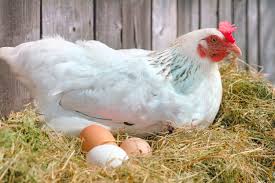Bird Flu- Eggs- Chicken- Cows- Humans- What You Should Know as of February 18, 2025…as this changes weekly.
Eggs vs. Chickens– Source- NPR
Egg farmers lost more than38 million birds to egg flu last year, 14 alone in December. Result egg prices have soared. However, chicken raised for meat ( know as broilers) live on different farms than those that produce eggs and they haven’t been hit nearly as hard with the flu. They are younger birds and typically older birds are more susceptible to the flu. They also have a shorter life cycle.
Cows and Bird Flu– Source- CIDRAP.umn.edu
As of February 5, the USDA announced bird flu in dairy cattle with the DD1.1 genotype.Until now, all dairy herd H5N1 detections have involved the B3.13 genotype, thought to be the result of a single spillover from wild birds in late 2023 or early 2024. The genotype has been linked to mild infections in dairy workers, along with some poultry cullers, with conjunctivitis the main symptom. This was detected in milk testing in Nevada.
Humans and Bird Flu– Source- CIDRAP.umn.edu
The D1.1 genotype currently circulating in wild birds and has been implicated in human infections, including the fatal case in a Louisiana resident who had contact with sick backyard birds. The other case was someone drinking unpasterized milk.
Animals including ducks, chickens, turkeys, pigs, whales, horses, seals, dogs, and cats have been known to be infected and according to USDA, there is no evidence that bird flu can hbe passed to humans who eat contained poulary products-eggs from infected birds are destroyed and chicken should be cooked to 166F. (we recommend cooking eggs- omelettes, hard boiled- kills bird flu and salmonella).Source-Newsweek
There has been some bird flu in humans- that have direct interaction with live chickens and who drink unpasteurized milk.
How to Tell if Your Bird, Cat or Dog Has Bird Flu– Source-avma.org
Pets should be kept in isolation (from yourself and other pets) and treated for symptoms as there is no specific treatment for HPAL infection. Sick birds- call USDA- 866-536-7593
BACKYARD FLOCKS AND PET BIRDS
Infected birds in backyard flocks, and possibly pet birds, may show one or more of the following signs:
- Sudden death with no prior signs
- Low energy or appetite
- Purple discoloration or swelling of various body parts
- Reduced egg production, or soft-shelled/misshapen eggs
- Nasal discharge, coughing, or sneezing
- Lack of coordination
- Diarrhea
Immediately contact your veterinarian if you notice any of these signs so they can help you determine the best course of action.
CATS AND DOGS
Clinical signs of HPAI infection in cats are better known than in dogs. Signs in either species may include the following:
- Fever
- Lethargy
- Low appetite
- Reddened or inflamed eyes
- Discharge from the eyes and nose
- Difficulty breathing
- Neurologic signs, like tremors, seizures, incoordination, or blindness








